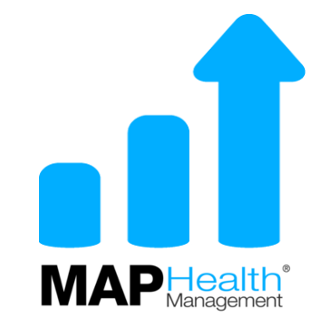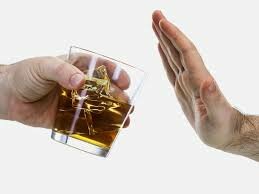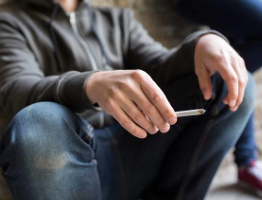Medications to Fight Addiction – Good or Bad?
Thomas G. Kimball, PhD
Published in The Doctor Weighs In, September 27, 2016. View the Article Here

Unparalleled numbers of overdoses and deaths from opioid abuse have led the U.S. Department of Health and Human Services (DHHS) to conclude that the nation is in the midst of an unprecedented epidemic. Since the turn of the century, at least 500,000 people have died from drug overdoses—almost as many had died during the Civil War—that claimed more American lives than any conflict in our nation’s history.
Opioids, a class of drugs used to treat pain, often cause feelings of euphoria, are highly addictive, and have claimed some notable lives—Prince, Philip Seymour Hoffman, Chris Kelly, Michael Jackson, and Heath Ledger all died with some form of opioid in their system. The most commonly abused varieties are hydrocodone, morphine, codeine, oxycodone, and fentanyl.
The use of opioids often spurs a vicious and relentless cycle wherein some people start using prescription pain medications for legitimate reasons (e.g., after accidents, following surgery, or to help manage chronic pain). But because of the highly addictive nature of opioids, when some individuals lose access to a prescription, they turn to heroin as a substitute. Heroin, also an opioid, is often easier to obtain and cheaper on the streets than other alternatives. It is estimated that 4 out of 5 new heroin users got their start by using prescription opioid pain medications.
Fighting the opioid epidemic is a top priority for many organizations, including HHS. National efforts include the creation of opioid prescribing safety guidelines, enhanced statewide drug monitoring programs, new best practices in handling overdoses, and Medication-Assisted Treatment (MAT) to assist those dependent upon opioids.
Medication-Assisted Treatment
Medication Assisted Treatment is a hotly contested issue in the addiction recovery world; one side strongly advocates for MAT and the other side vehemently opposes it. One side believes that MAT should never be used, including never using drugs to help addicts go through detox. The other side believes in using medication beginning with detox and tapering down over a period of time as the dependency lessens. Still, others believe that use of drugs for long-term maintenance and stability yields the best results.
Proponents of MAT hope that patients experience decreased cravings and do not abuse opioids. The reduction in cravings, whether MAT is used in detoxification or in on-going maintenance, may reduce illicit use, crime, and help people stay in treatment and long-term recovery.
It’s a tricky, complicated issue. With approximately 1 in 4 Americans either directly or indirectly affected by the epidemic, it is important to understand the facts.
What is Medication Assisted Treatment?
The Substance Abuse and Mental Health Services Administration (SAMHSA) states:
“Medication-assisted treatment (MAT) is the use of medications in combination with counseling and behavioral therapies for the treatment of substance use disorders. A combination of medication and behavioral therapy is effective in the treatment of substance use disorders, and can help some people to sustain recovery.”
Medication Assisted Treatment for opioid addiction primarily uses one of the following medications: methadone, buprenorphine, and naltrexone.
Methadone
Methadone is dispersed through special treatment centers often referred to as methadone clinics. Methadone is seen as preferable to using other opioids because it is long acting and is metabolized slowly. It can stabilize individuals and prevent withdrawal, which can include flu-like symptoms including fever, body aches, nausea, and dehydration.
Some people believe that methadone has strong potential for abuse, or that it creates ‘walking zombies’ due to the stupor it can sometimes cause. This stupor may be a matter of monitoring and dosage; it is extremely important to titrate the dosage in order to control cravings and manage withdrawal, however, very few clinics make these types of fine dosing adjustments. They tend to err on the side of prescribing too much rather than too little, thus causing the adverse side effects.
Buprenorphine
Buprenorphine is commonly used in detox situations to reduce symptoms of opioid withdrawal. It is also used to control long-term symptoms through extended maintenance programs. It can be used in treatment centers or at home through a prescription. Many advocate for buprenorphine as a safer alternative to methadone due to its ‘ceiling effect’—that is to say, individuals do not develop a tolerance above a certain dosage level. Like methadone, buprenorphine is long-acting and slow metabolizing, which removes the high as well as the subsequent withdrawal of short-acting opioids.
Advocates believe that buprenorphine normalizes the brain and that patients do not walk around high or in a drug-induced stupor. However, those opposed to its use claim that it can act as a gateway drug to other addictions if the individual has not used other opioids.
Naltrexone
First approved for use in alcoholics, naltrexone is also used to treat opiate abuse. It decreases cravings and the desire to use; however, a downside is it appears to block cravings in some individuals and not necessarily in others.
These drugs are not to be confused with naloxone, which has received a great deal of attention in the media recently due to its successful use in reversing the effects of life-threatening opioid overdoses. Naloxone has no potential for abuse and has already saved thousands of lives. Anyone can be quickly trained to administer naloxone, making it ideal for emergency overdose situations. Lately, however, reports have emerged that the drug has increased in price, preventing some small communities from being able to purchase it.
As our nation fights the opioid epidemic, more and more of us have begun to feel its
impact. Addiction, a chronic brain disease, has long been misunderstood and MAT, while controversial, is another component to an illness historically weighed down by stigma. The use of Medication Assisted Treatment will likely remain controversial, and whether it is prescribed will—and should—be up to individual healthcare providers on a case-by-case basis. Regardless, both advocates and opponents of MAT agree that behavioral therapy, group therapy, recovery support, community support, and a general wellness plan are just as important when fighting addiction.








